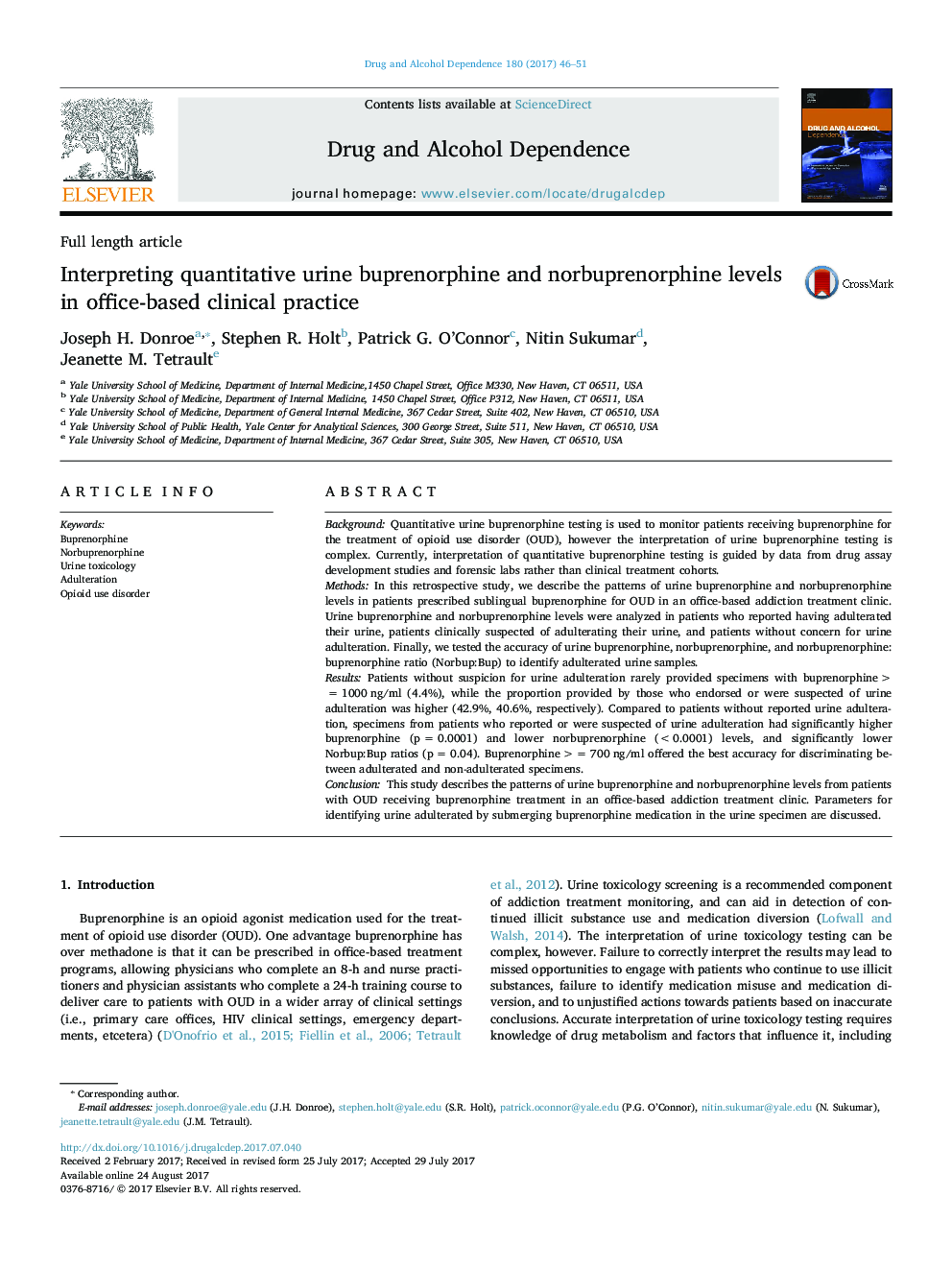| کد مقاله | کد نشریه | سال انتشار | مقاله انگلیسی | نسخه تمام متن |
|---|---|---|---|---|
| 5119844 | 1486111 | 2017 | 6 صفحه PDF | دانلود رایگان |
- The interpretation of urine buprenorphine testing can be complex.
- Urine samples from patients with opioid use disorder are analyzed.
- Patterns of urine buprenorphine and norbuprenorphine levels are described.
- Metabolite levels to detect potentially adulterated urine specimens are suggested.
BackgroundQuantitative urine buprenorphine testing is used to monitor patients receiving buprenorphine for the treatment of opioid use disorder (OUD), however the interpretation of urine buprenorphine testing is complex. Currently, interpretation of quantitative buprenorphine testing is guided by data from drug assay development studies and forensic labs rather than clinical treatment cohorts.MethodsIn this retrospective study, we describe the patterns of urine buprenorphine and norbuprenorphine levels in patients prescribed sublingual buprenorphine for OUD in an office-based addiction treatment clinic. Urine buprenorphine and norbuprenorphine levels were analyzed in patients who reported having adulterated their urine, patients clinically suspected of adulterating their urine, and patients without concern for urine adulteration. Finally, we tested the accuracy of urine buprenorphine, norbuprenorphine, and norbuprenorphine: buprenorphine ratio (Norbup:Bup) to identify adulterated urine samples.ResultsPatients without suspicion for urine adulteration rarely provided specimens with buprenorphine >= 1000 ng/ml (4.4%), while the proportion provided by those who endorsed or were suspected of urine adulteration was higher (42.9%, 40.6%, respectively). Compared to patients without reported urine adulteration, specimens from patients who reported or were suspected of urine adulteration had significantly higher buprenorphine (p = 0.0001) and lower norbuprenorphine (<0.0001) levels, and significantly lower Norbup:Bup ratios (p = 0.04). Buprenorphine >= 700 ng/ml offered the best accuracy for discriminating between adulterated and non-adulterated specimens.ConclusionThis study describes the patterns of urine buprenorphine and norbuprenorphine levels from patients with OUD receiving buprenorphine treatment in an office-based addiction treatment clinic. Parameters for identifying urine adulterated by submerging buprenorphine medication in the urine specimen are discussed.
Journal: Drug and Alcohol Dependence - Volume 180, 1 November 2017, Pages 46-51
